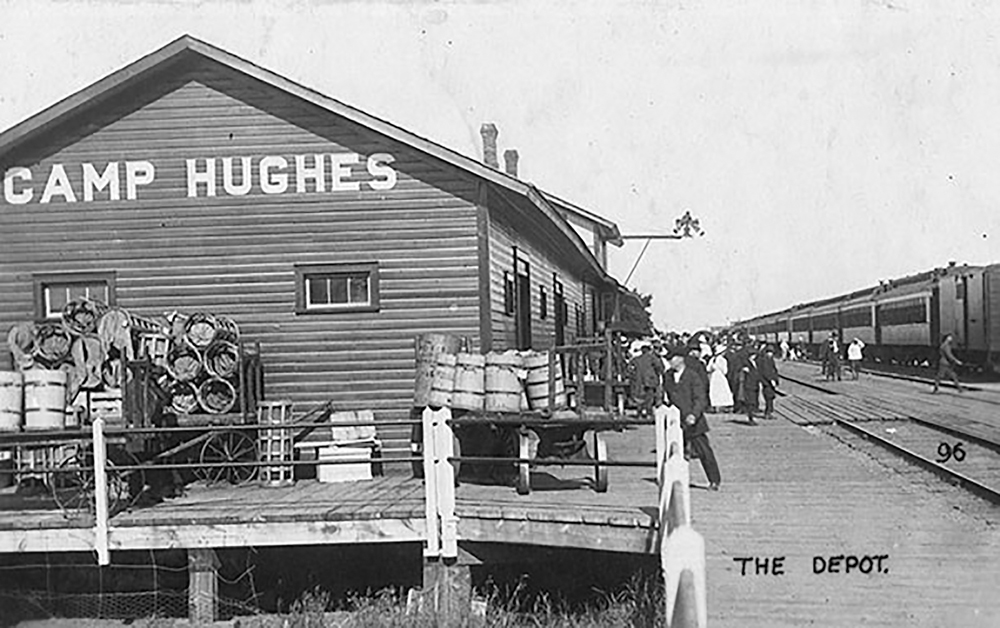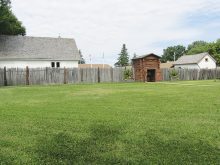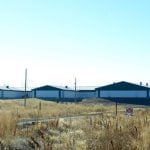November 11 is fast approaching, but this year’s events may need to be somewhat different.
If Remembrance Day programs are cancelled in your area, or if you’re unsure about attending a socially distanced service, consider an outdoors way of remembering and honouring our fallen soldiers.
If the weather and roads remain good, one good way is to visit the former Camp Hughes site, a national historical site located west of Carberry, Manitoba in the RM of North Cypress-Langford.
During the First World War, Camp Hughes served as a training base for Canadian soldiers and those from other parts of the British Commonwealth. In 1916, nearly 28,000 troops were based there, making it the second-largest centre in the entire province. Only Winnipeg was bigger.

Originally called Camp Sewell, it was renamed Camp Hughes in September 1915, in honour of Canada’s minister of militia and defence at the time, Major General Sam Hughes. By then, white bell tents spread across the area but there were also permanent buildings, such as retail stores, offices, a post office, a hospital and prison.
For off-work entertainment, trainees could make use of six movie theatres, photo studios and a heated in-ground swimming pool. None of these remain today, but still visible are a small cemetery and the remains of the trench system used in training the troops. A plaque and four information panels also mark the spot, but most of the site is a rolling area of grass and scattered poplar trees.
Visitors to the present-day site of Camp Hughes can read the panels and look out over the grassy slopes where thousands of troops engaged in practice battles. A stroll through the cemetery reveals the graves of six soldiers who died of various illnesses while training there, as well as those of some local people who were buried there after 1920. Walking trails lead through the rolling terrain where the remains of the trench system are still evident. Today you might think these are just strange, zigzagging shallow ditches, but at the time they were deep enough for trainees to practise hiding or moving undetected from spot to spot. Rolls of barbed wire also acted as barriers to movement in various directions.

Camp Hughes was officially abandoned in 1927 and decommissioned in 1933. It was dismantled as part of an unemployment relief project, and the training of soldiers was removed to CFB Shilo, with only occasional use of the Camp Hughes area into the 1950s.
To reach Camp Hughes, drive west from Carberry on PR 351, or turn off the Trans-Canada onto No. 351 at approximately 92W, and then drive about two km east. A “Camp Hughes Cemetery” sign directs you south across the railway track and about two more kilometres. If possible, before you go, visit the Military History of Manitoba website given below and download a brochure showing a self-guided trench tour. The brochure indicates an easy-access route for those who find walking difficult, and a regular route for those wishing to climb up and down in the trenches.
In recent years, special programs have been held at Camp Hughes on the first Sunday of October, but not this year. However, self-arranged visits are encouraged, as long as the weather and road remain suitable.

Camp Hughes is Manitoba’s only National Historic Site dedicated to the First World War. It is well worth a visit for Remembrance Day, if possible, but if much snow comes prior to that, a visit next summer would work better. In that case, a virtual tour might be best using these sites.
For archival pictures, the trench tour brochure or more information, check out this Military History site.
For present-day aerial views check out the Manitoba Historical Society’s website.















